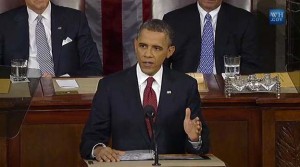President Barack Obama wants to turn on the electric vehicle market and is proposing a significant increase in the already sizable tax credit available to buyers of battery cars and plug-in hybrids.
As part of his latest budget proposal, the President has proposed increasing the current $7,500 tax credit – available for vehicles like the Nissan Leaf and Chevrolet Volt – to $10,000 with the goal of boosting demand for the high-mileage vehicles.
The Obama Administration has strongly backed the push for electric propulsion – which many experts believe will be essential to meet the strict fuel economy mandates set to go into place in 2025.
But despite following through on a State-of-the-Union promise to also include $4 billion in new subsidies for the oil and gas industries, the overall budget proposal appears to have little chance of passage, at least without significant changes. Senate Minority Leader Mitch McConnell, a Kentucky Republican, denounced the Obama budget as little more than a “campaign document.”
While Democrats and Republicans will eventually need to hammer out some sort of compromise it is anything but certain they will agree on an increase in spending for battery car technology at a time when deficit cutting is a driving factor in the presidential race.
Nonetheless, the administration could draw a line in the sand over this issue. The President has set a goal of putting at least a million plug-in vehicles – which would include both plug-in hybrids and full battery-electric vehicles – on the road by 2014. That’s going to be a tough challenge considering barely 17,000 of those vehicles were sold last year, Leaf and Volt struggling to meet original sales targets.
Critics have questioned the credits, especially when applied to high-end electric vehicles, such as the new $102,000 Fisker Karma plug-in and the planned Tesla Model S, which will push north of $90,000 – before the credit – fully loaded with a 300-mile battery pack.
But proponents counter that credits are critical to encourage the development of not only high-end battery vehicles but more affordable models, such as the upcoming Toyota Prius Plug-in, which will cost barely a quarter as much as the Fisker Karma.
The current tax credit applies to vehicles carrying at least 4 kilowatt-hours of batteries, which means conventional hybrids, such as the standard Toyota Prius and the Ford Fusion Hybrid, don’t qualify. The Prius Plug-in, with enough batteries to go about 13 miles per charge, will be eligible for the minimum $2,500 tax credit – unless the law changes.
The current top credit of $7,500 covers vehicles with at least 16 kWh of batteries. The new Tesla Model S will carry anywhere from 40 to more than 80 kWh, depending on the range a buyer will opt for.
It’s unclear, meanwhile, if the Administration will also push to restore a second electric vehicle credit program. Credits aimed to help cover the cost of installing a high-speed, 220-volt battery charger expired at the end of 2011.
One of the sharpest criticisms of electric vehicles is actually aimed at the nation’s energy providers. Skeptics argue that battery power does little more than move the source of pollution from the tailpipe to the smokestack.
(New study says battery cars could actually worsen China’s pollution if power comes from coal. Click Herefor that story.)
The administration hopes to address such concerns by pressing utilities to switch to zero, or at least low-, emission energy sources for 80% of their power by 2035.

